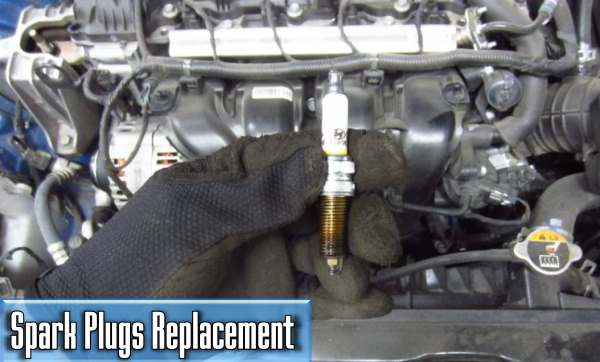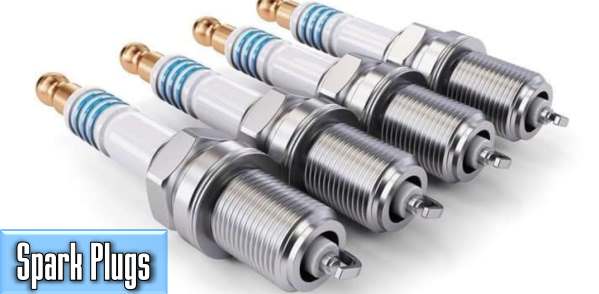Although spark plugs can be replaced at a paltry sum of money, they serve a major function in our vehicle. They are said to be the hardest working component in a vehicle. The presence of spark plugs allows the car’s engine to perform at its maximum combustion level when driving.
Basically, spark plugs produce a tiny spark that starts the combustion process. Believe it or not, a spark plug can fire 3,200 times every minute on an eight-cylinder engine. To put it simply, a spark plug plays a great role in a car’s performance, dependability, and fuel efficiency. Geographically, it sits on top of the cylinder head.
For those who don’t know, diesel cars don’t feature spark plugs. But all petrol-powered cars use spark plugs to produce combustion. Even if you don’t have all the hyped-up information about spark plugs, you will learn a lot about them today.
How Does It Cost To Replace Spark Plugs?
If you are thinking of getting the spark plugs replaced, you might be wondering how much it’s going to cost you. Spark plugs typically cost less than $10 a piece. That said, you will have to replace several of them at once. For instance, you will have to replace four spark plugs on a 4-cylinder vehicle.

At $10 a unit, the cost for 4 spark plugs would be $40. Of course, you need to keep in mind the labor cost as well. So, you can expect to spend anywhere between $50 to $150 for spark plugs replacement, depending on where you get the job done.
Now, if you don’t find a mechanic to replace the spark plug, you can replace it yourself, without throwing an arm and a leg, which is to say that you can get the job done for less than fifty bucks.
Of course, a vehicle repaired at a dealership will cost more than usual. In such a scenario, you can expect the repair cost to shoot up to $150.
| Auto Center | Price |
|---|---|
| Pep Boys | $55 – $110 |
| Walmart | $50– $100 |
| Mr. Tire | $60 – $140 |
| Midas | $70 – $150 |
How Often Should You Replace the Spark Plugs?
The fact that spark plugs are made from Iridium or Platinum, they enjoy a long lifespan. Believe it or not, the recommended interval for spark plugs change falls between 80,000 to 1,00, 000 miles, which means that they won’t bother you too often. That said, some automakers recommend a spark plus change at every 30,000 miles.
For those who are not aware, luxury cars usually have a shorter interval. So, nothing is etched in stone over here. Depending on the type of spark plugs used in the vehicle, the suggested interval for spark plug change would vary quite a lot.
Therefore, your best bet would be to take a glance at the user manual to find out what interval is suggested for your car.
What Are the Signs of Faulty Spark Plugs?
Keep in mind that there will be times when you will be forced to change the spark plug well before the estimated replacement interval, especially when you notice one or more of these symptoms in your car:
- You are finding it hard to start the engine
- If your car is using more fuel than usual
- If your car is running sluggishly
- If the car engine is misfiring
- If the engine light is acting weird
Keep in mind that these episodes cannot always be linked to a faulty spark plug. Therefore, it’s better to get a technician to diagnose the issue as opposed to getting the spark plugs replaced right away. Basically, you should get the spark plugs checked out, anytime your car engine seems a bit off.
Mechanical-savvy guys can also do some self-inspection to check the spark plug’s health. Healthy spark plugs will look almost brand new for longer. If the spark plug has an oily coating or a dry sooty deposit on it, it’s likely that the spark plug has given up.
Also, spark plugs with chips or cracks will have to be remedied at the earliest because they can damage the piston.
How to Replace Spark Plugs?
New spark plugs will improve your car’s mileage and overall performance. Not to discount the fact that the process of replacing the spark plugs is fairly similar from one car to another. But then, their location will differ from car-to-car. Not to mention that you shouldn’t try to locate them when the engine is running hot.
- Use the owner manual to find out where the spark plug is located in your vehicle. Believe it or not, it’s the most accessible part of an engine. So, you won’t have a lot of trouble finding it.
- Then, get under the hood to see for yourself what’s wrong with the vehicle. If you see a lot of dirt surrounding the spark plugs, cleaning will help.
- Many spark plug problems are due to dirt accumulation, which prevents the connectors from doing their intended job. If cleaning doesn’t solve the problem, then you might have to replace the worn-out spark plugs.
- As touched upon earlier, look for signs of oil build up on the spark plug, which should tell you that the spark plugs need a replacement, especially when the spark plug color has turned quite dark.
- Take the worn-out spark plugs and inspect the engine heads where the spark plugs are installed. Over here, you may want to check the ignition wires and the compression as well.
- Finally, apply the anti-seize to the threading of the spark plugs and install the new ones. To test things, start the engine to see if the vehicle is operating smoothly or not.
How to Shop for Spark Plugs Replacement?
As you might already know, shopping for auto parts can be a daunting task. However, many auto parts stores have parts counter where people performing DIY work can get the parts they need without any fuss. All you have to do is specify your car’s year, make, and model to the staff attending you.

The staff will be able to pull out the right item based on the information you provide. Of course, you always have the option of buying recycled parts to save money. But then, it’s not needed in the case of spark plugs replacement because they don’t cost much.
So, stick to buying (OEM) original equipment manufacturer parts since they will be new and not recycled.
Important Information: When it comes to choose the right spark plugs for your vehicle, stick to the car manufacturer’s recommendation. Yes, every vehicle manual will clearly specify what type of spark plug will best suit your vehicle.
Generally speaking, Iridium spark plugs last longer than Platinum spark plugs by 25%. So, don’t commit the classic mistake of downgrading to Platinum if Iridium spark plugs are recommended in the user manual. Basically, don’t assume that you are more qualified in this area of car maintenance than the product manufacturers.
Only if you have already done some extensive modifications to your car, you can expect to have some wiggle room with regards to the selection of spark plugs.
How to Save on Spark Plugs Replacement?
Needless to say, if you take the DIY route, you will be able to save a fistful of money because the only expense you will incur is for the parts. As hinted earlier, the spark plugs, by themselves, don’t cost a bomb, allowing you to save quite a bit of money in the process.
Not to mention that you won’t need expensive tools to take care of this DIY project. But then, you should have the necessary level of expertise to conduct the job.
If you are not a mechanically savvy person, you can learn the procedure quickly by watching an experienced person perform the job. If you don’t know what you are doing, you can make mistakes and invite more expenses.
With car repairs, even a small mistake can lead to a lot of expenses, depending on how your stars are aligned on that particular day. Basically, don’t try to save money on labor costs if you are not sure what you are doing. After all, you don’t want to end up ruining your vehicle in an attempt to save a few dollars.
 Car Service Land Coupons for Oil change, Tires, Wheel alignment, Brakes, Maintenance
Car Service Land Coupons for Oil change, Tires, Wheel alignment, Brakes, Maintenance